Reviews
Ralph Bakshi
USA, 1983
Credits
Review by Leo Goldsmith
Posted on 26 April 2011
Source Blue Underground DVD
External links
The Unofficial Frank Frazetta Fantasy Art Gallery
Categories Ralph Bakshi’s Cool Worlds
In spite (or because) of its oddity, Ralph Bakshi’s mythopoetic masterpiece Wizards was in fact quite a big hit, earning some $9 million theatrically, just a few months before Star Wars arrived to dominate the sci-fi/fantasy genre. But his next foray into the genre, 1983’s Fire and Ice, had no such luck. Hoping to ride the wave of recent macho fantasy films like Conan the Barbarian and The Beastmaster, both released the year before, Bakshi initiated the project with longtime friend Frank Frazetta, whose pulp and comic-book artistry of glistening pecs, fur-and-leather thongs, gleaming swords, and oversized reptiles more or less created the genre, inspiring LARPies and multimedia franchises for generations to come. Unfortunately, one of those franchises was soon upon Bakshi and Frazetta’s heels: He-Man and the Masters of the Universe, already a successful comic book, premiered on television a week after their film hit theaters, effectively usurping Bakshi and Frazetta’s claim to the genre.
To be sure, Fire and Ice is no masterpiece on the level of Wizards—indeed, its somewhat simplistic narrative seems even cobbled together from that film and the works that Frazetta had illustrated. For starters, there is an oddly jumbled, but still distinct similarity in character names and relations: the film involves an antagonistic dualism of forces - fire and ice here; magic and technology in the earlier film - each personified by its own larger-than-life sorcerer figure. In his megalomaniacal drive to control or crush every living creature with his crazy ice-magic, the rather fey Nekron resembles brutal technocrat Blackwolf from Wizards, and not, confusingly enough, the more similarly named robot Necron-99. And on the other side, with even more confusion, there is Darkwolf, who uses his ambiguously fiery drive to resist the ice and reestablish peace throughout the land. These two figures - Darkwolf and Nekron - might even be related, perhaps both the sons of the same mother (as in Wizards), whom Darkwolf refers to as “that wolf-bitch Juliana.” And just as in Wizards there are a handful of lesser, but no less useful beings to help out: King Jarol, the good guardian of Firekeep; his buxom daughter Teegra, who spends the entire film running around barefoot in a tiny bikini; and the blonde-braided, heroic, and distinctly He-Manesque Larn, who wears only a leather thong and ass-kicking boots.
But even if it’s fairly standard in its storyline, Fire and Ice remains a fairly stunning technical achievement, surely Bakshi’s most beautiful (and least grotesque) film. It’s a wonderful tribute to Frazetta’s work, too, with beautifully realized set-pieces involving big lizards and hydras, domesticated jaguars and pterodactyls, and lots of chasing and fighting. The background painting alone makes the film worthwhile, showing off early, for-hire work by James Gurney, later very successful with his series of Dinotopia books, and famous QVC-hawking cornball Thomas Kinkade, the self-professed “Painter of Light.”
Of course, the most dazzling technique on display here is the rotoscoping, which was by then Bakshi’s trademark. Say what one will about rotoscoping - that it’s “cheating” and not pure animation - the effect is eery and beautifully suited to an action-heavy film like Fire and Ice. (It’s also a technique that has been in use almost since the very beginning of animation in cinema and continues in varying forms in video game and feature-film animation. Importantly, one can also see it as the ancestral species of the sort of motion-capture that lent an uncanny expressivity Peter Jackson’s Gollum.) Here, Bakshi’s rotoscoping technique is more sophisticated than ever, allowing him to stage fairly complex action sequences, especially once Darkwolf turns up to start summoning his incendiary magic and splitting the heads of the Sub-Humans with his axe.
It’s also worth noting that rotoscoping enables Bakshi and Frazetta to realize Teegra with maximum T&A verisimilitude. Once kidnapped by and subject to the leering advances of Necron’s mutants, the always erect-nippled heroine becomes the object of a relentless series of crotch-shots. The rotoscope technique seems particularly well equipped to capture and enhance every minute jiggle, raising the question of just who the audience of this film was intended to be in the first place. By defiantly peppering his film with bloody hacking and pert breasts - situating the film, as a friend of mine put it, in the “sword and sorority” genre - Bakshi remained true to Frazetta’s work, but perhaps made it more difficult for his film to find an audience in an era of frenzied kid-consumerism and the family blockbuster. Conan and Beastmaster tread in similarly ambiguous territory, but as animation (in the Western world at least) is often relegated to the ghetto of children’s entertainment, it’s no wonder Fire and Ice lost out to the Power of Grayskull. But then this trend of demographic pigeonholing has riled Bakshi throughout his career, and his films are all the more interesting for how stridently he thumbs his nose at it. Compared to something like Hey Good Lookin’ or Heavy Traffic, Fire and Ice is a decidedly more tepid, commercial venture, but it’s a lot more ambitious than its reputation might suggest and a damn sight more purely entertaining than much of Bakshi’s body of work.
More Ralph Bakshi’s Cool Worlds
-
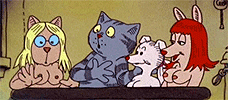
Fritz the Cat
1972 -
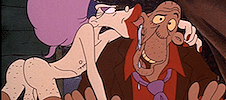
Heavy Traffic
1973 -
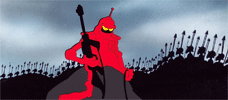
Wizards
1977 -
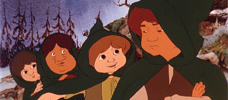
The Lord of the Rings
1978 -
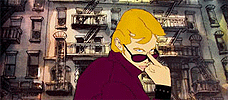
American Pop
1981 -
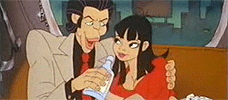
Hey Good Lookin’
1982 -
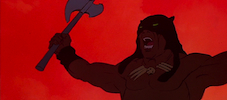
Fire and Ice
1983 -
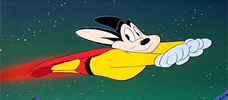
Mighty Mouse: The New Adventures
1987–1988 -
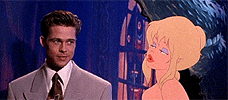
Cool World
1992 -
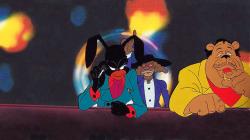
Coonskin
1975
We don’t do comments anymore, but you may contact us here or find us on Twitter or Facebook.



